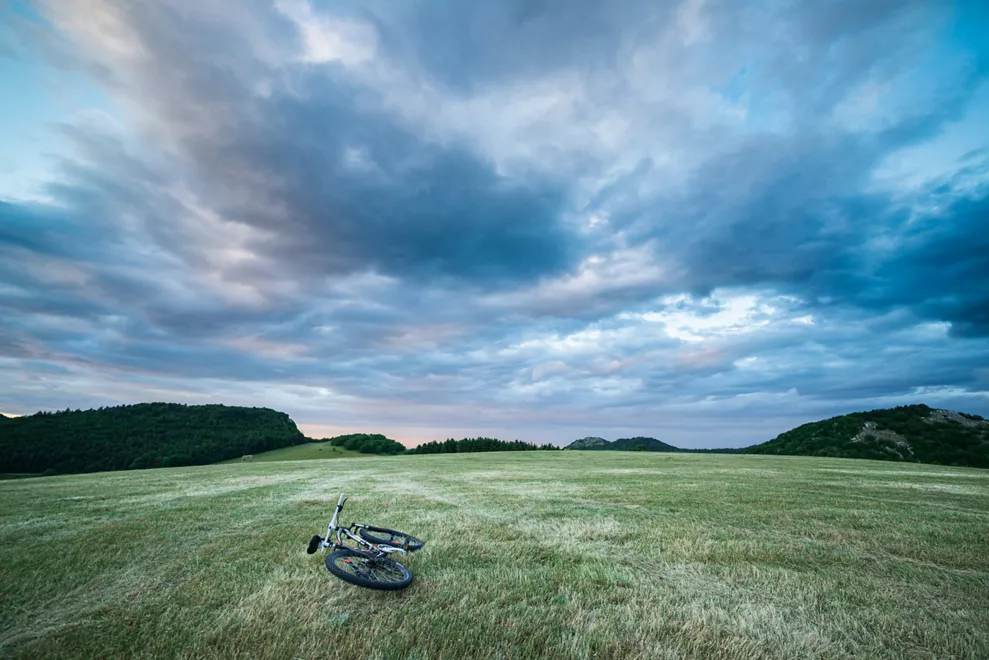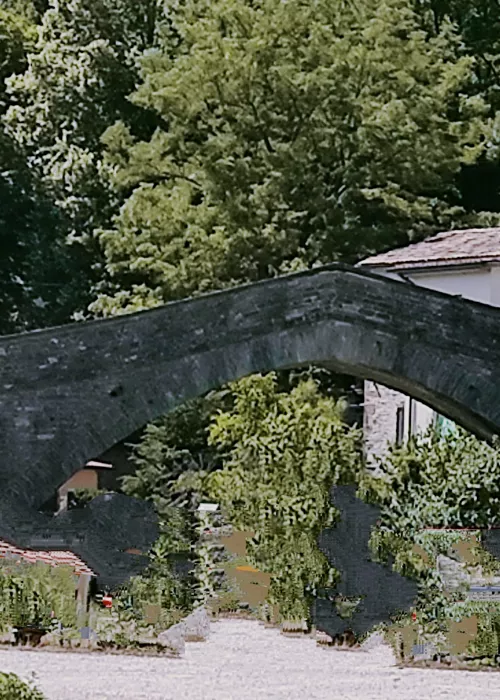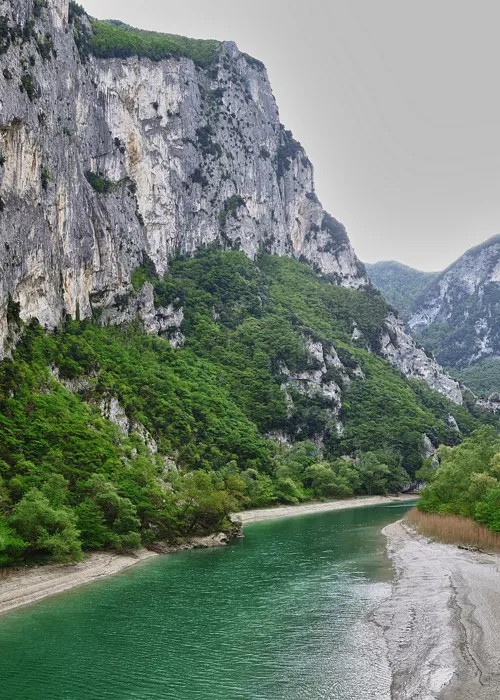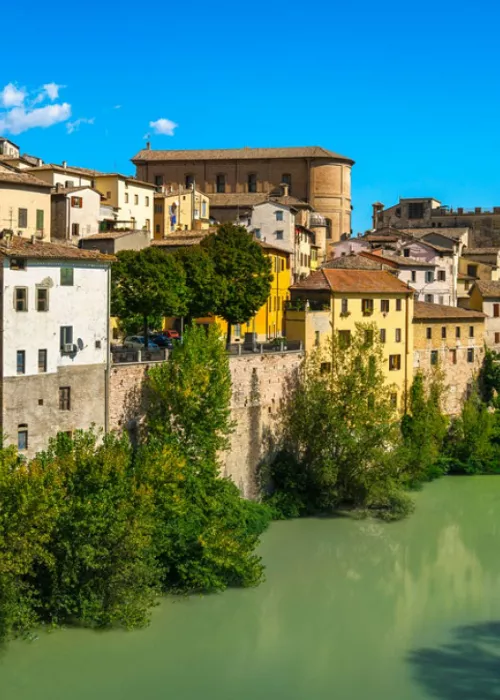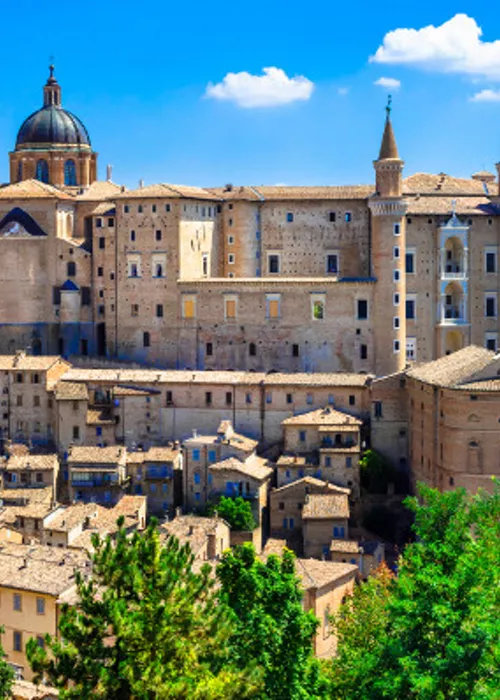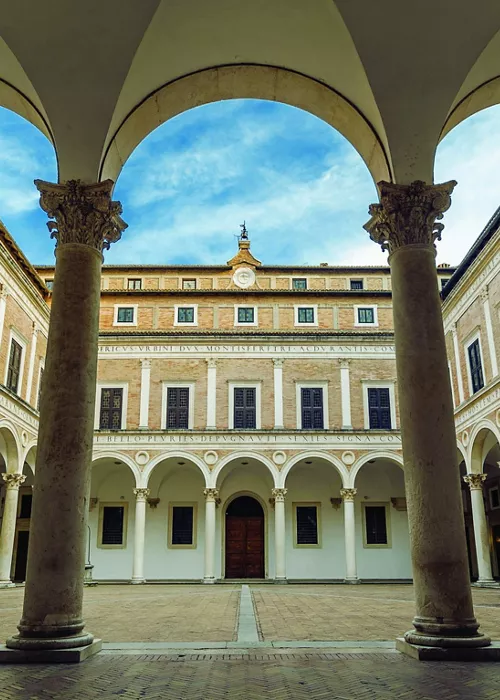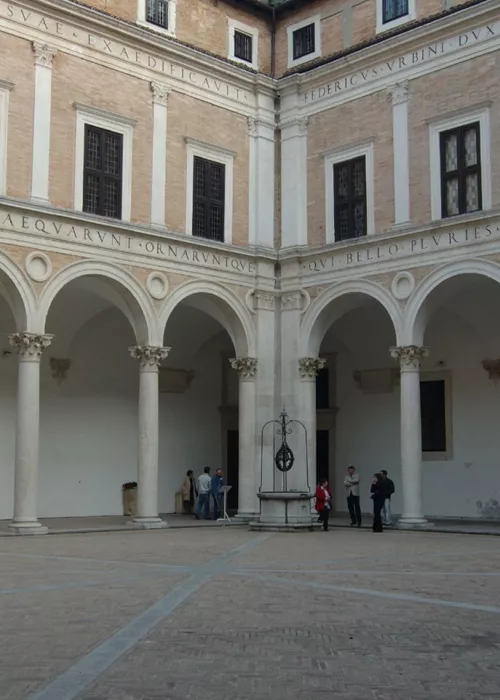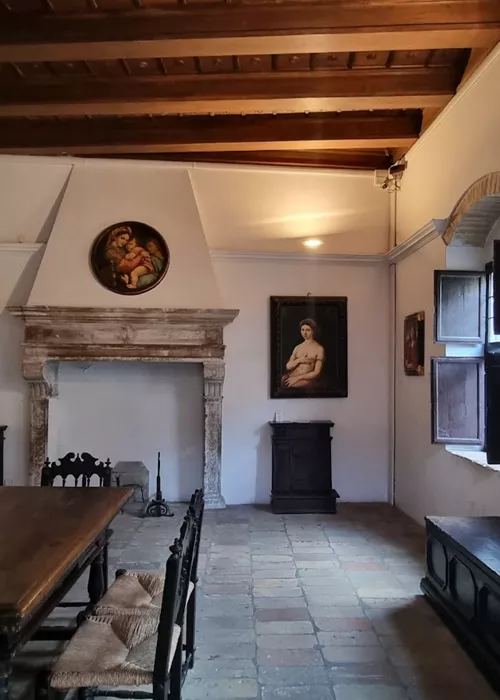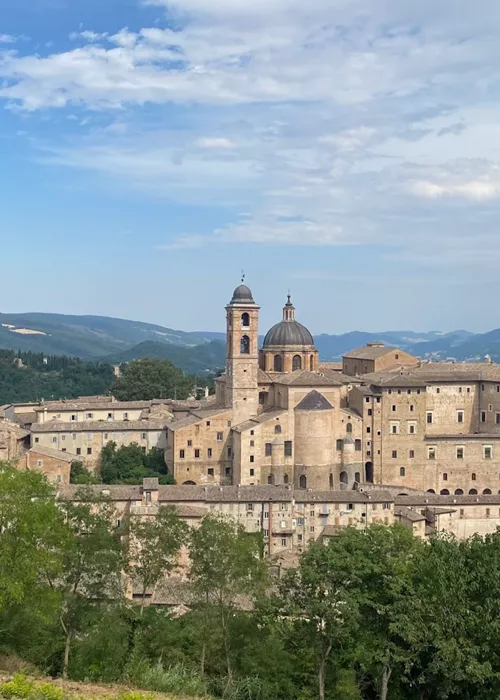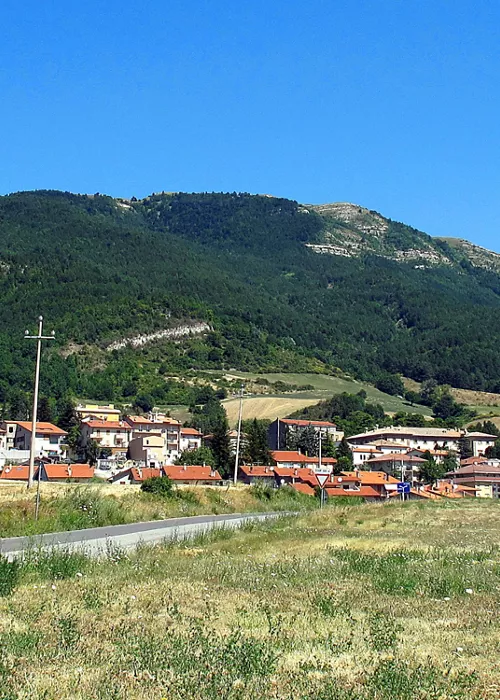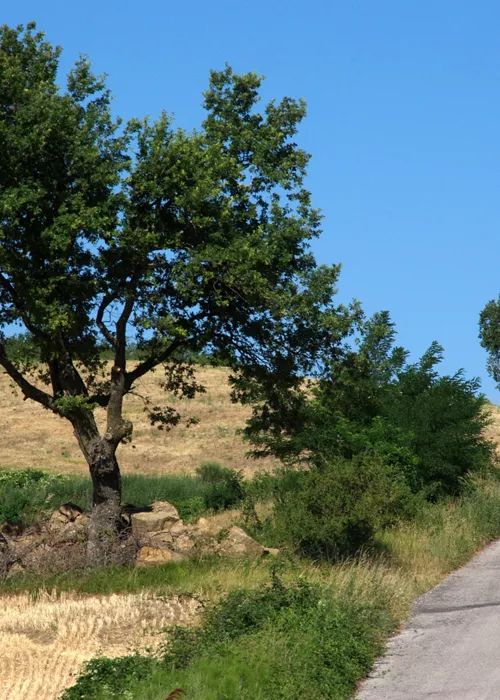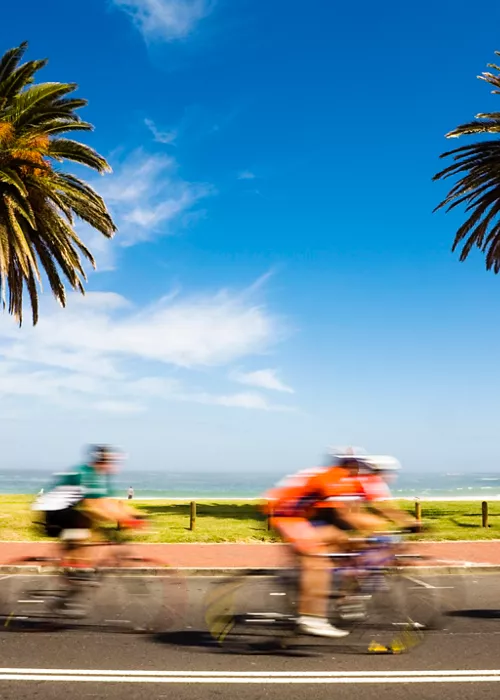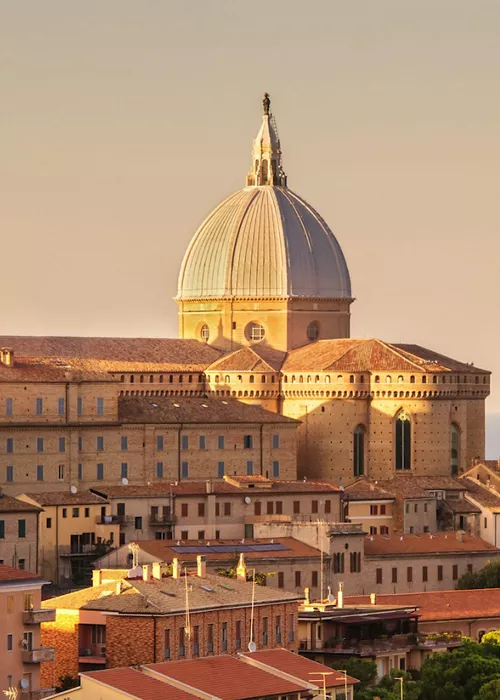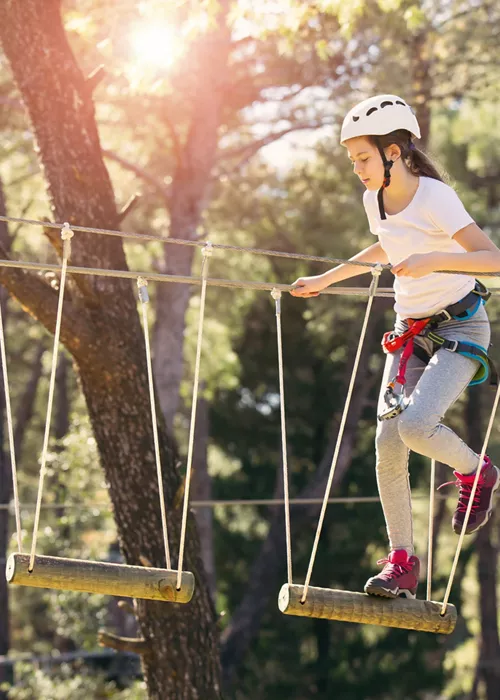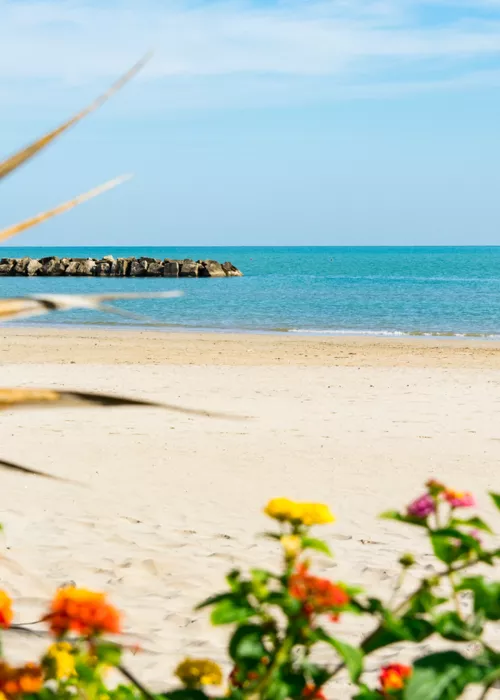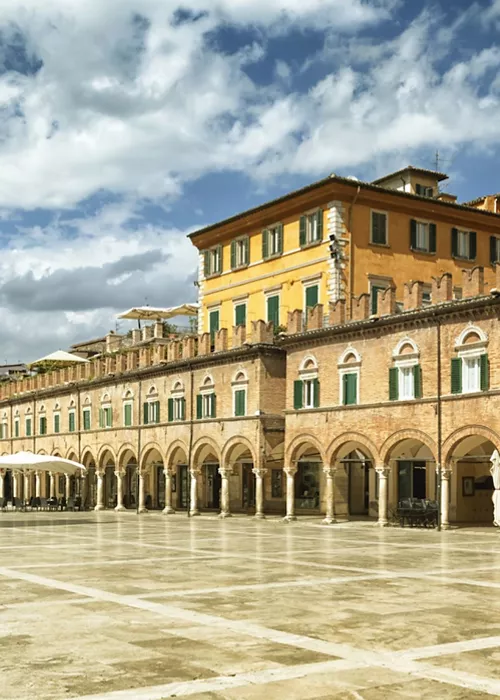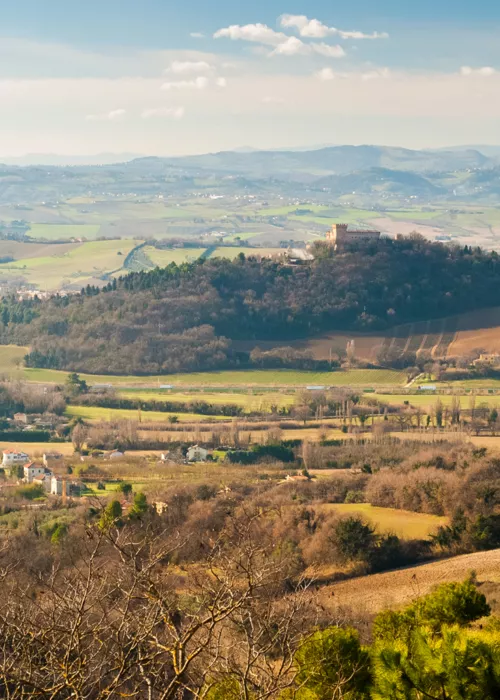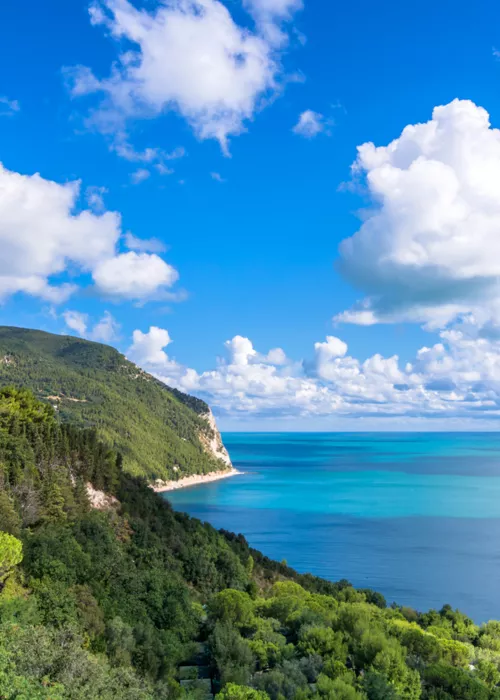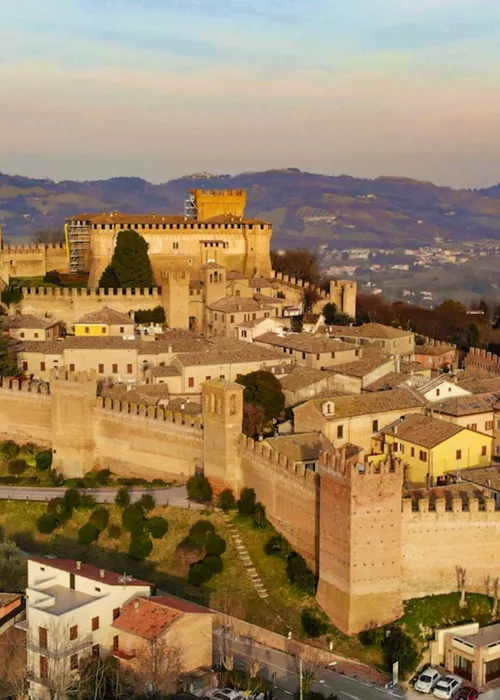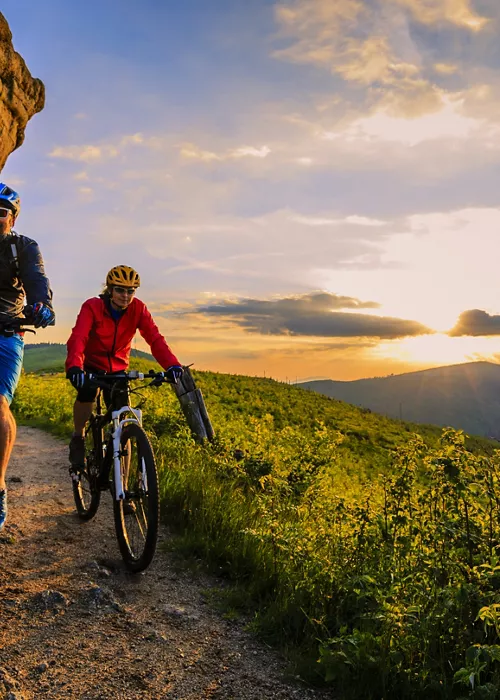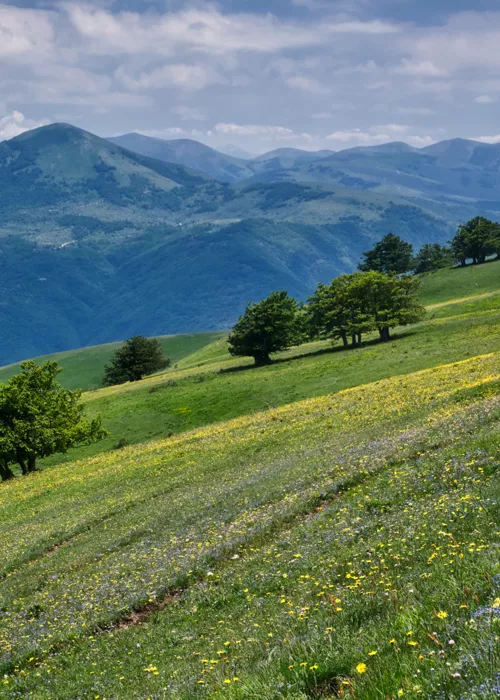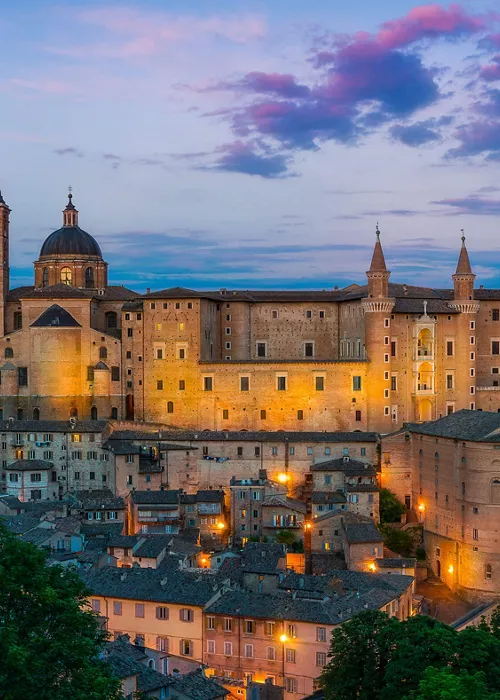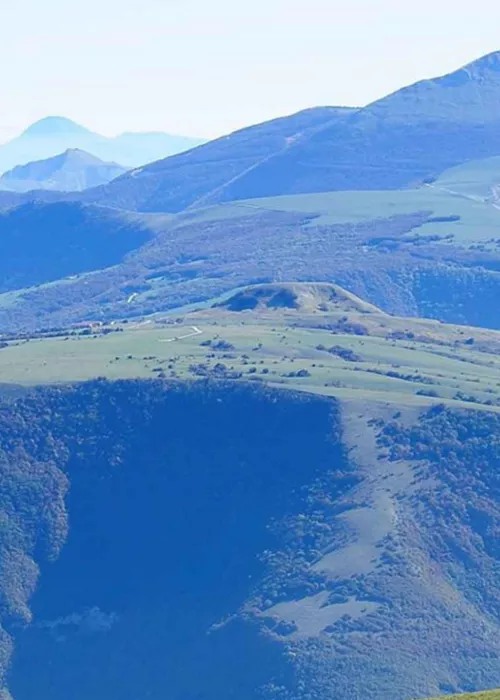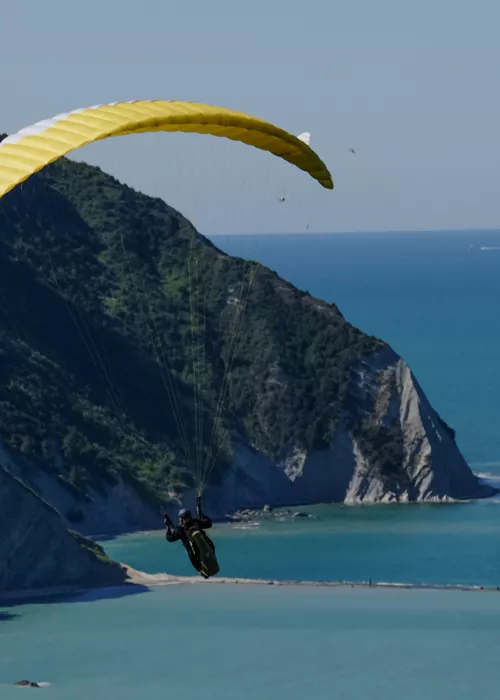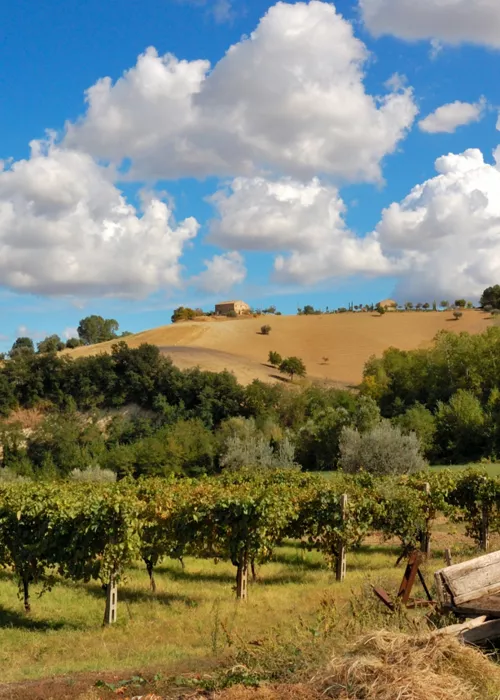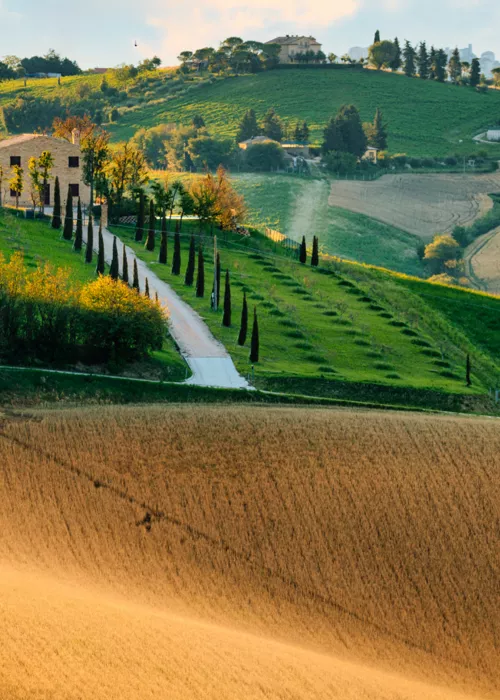Riding the bike amidst the hills of Le Marche
3 minutes
Between nature and gluttony
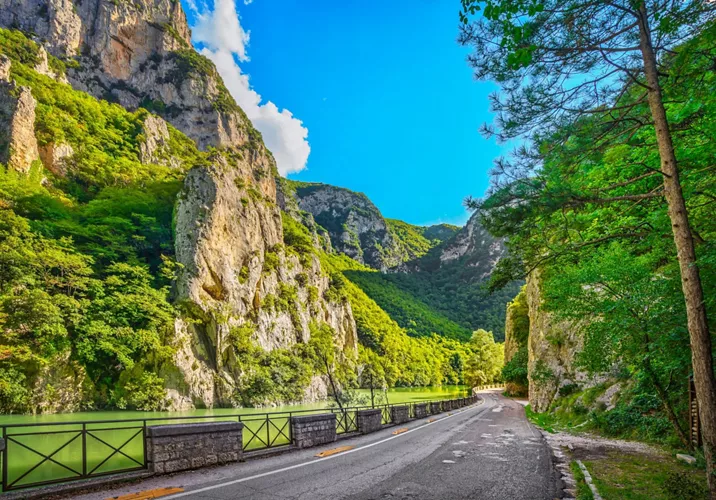
Between the Apennines and the coast, it stands a stretch of wooded hills, spotted with castles and walled towns. One of them is Apecchio. The route starts here and immediately heads to the Adriatic Coast on undulating roads. It is a mild and easy ride on roads that can be dealt with on a touring or a mountain bike. After a dozen kilometres the itinerary leads to Acqualagna, in the Gola del Furlo National Natural Reserve. Option number one: get off your bike and walk into the canyon gorges. Number due: enjoy the title of World Capital of Truffles, the certified local product of this area, with a dedicated museum, events and menus that sing an ode to this tuber. Back on your bike, you continue along the Flaminia, the ancient consular road that connected Rome and Northern Italy. Here you can see it in its pristine condition: for a couple of kilometres, before Fossombrone, in the archeological site of the old Forum Sempronii, you admire a paved stretch of the original road with the grooves left by the carriages.
Urbino, cradle of art
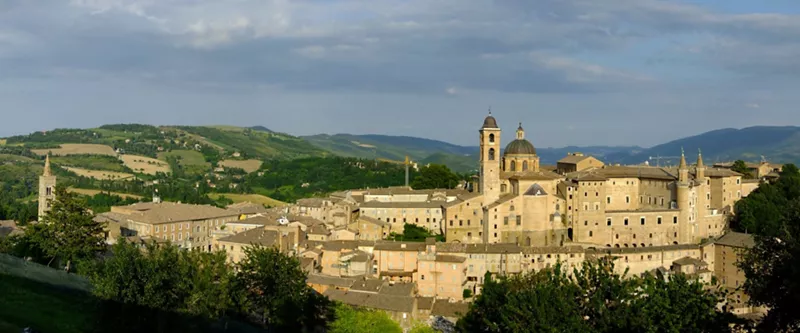
The central section of the route, slightly more undulated, runs on a sequence of hills (the highest is Mombaroccio, 305m altitude) and leads to Urbino, the Renaissance seat of the Dukes of Montefeltro. A pause in the walled city, a UNESCO world site since 1998, is out of discussion. The Palazzo Ducale, a fortress in the city with its 365 rooms (one for each day of the year) is an unmissable landmark. It is also home to the National Gallery of Le Marche, with masterworks by Piero della Francesca and Raffaello, who was born in Urbino and whose home-studio, just around the corner, is perfectly kept and open to the public. The permanent collection includes another jewel: The Ideal City, the painted symbol of Italian Renaissance, whose authorship is unknown. If all of this sparks some creativity, get hold of a camera (alright, your smartphone is good enough) and at sunset be ready at the Arbornoz Fortress, a strategic spot for the perfect shot. The view over the roofs is priceless.
The Carpegna climb, keeping the pirate in your heart
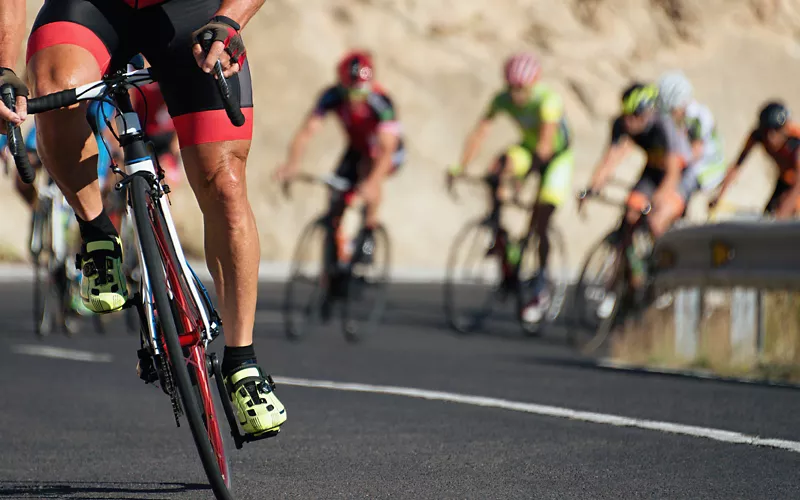
From art history you move on to the cycling history. The final stretch of the sixth stage of Tirreno-Adriatico is an open homage to Marco Pantani, the bicycle ace who passed away tragically in 2004. The final circuit, to be raced twice, includes two ascents up the Cippo di Carpegna – a 6km climb reaching 14 percent gradient. It was one of the most loved climbs of the Pirate – that is how the champion was nicknamed – who trained tirelessly on this tarmac road. For those who are crazy for riding, pedaling in his however imaginary wake is a mystical experience. But mind the highly testing descent: keep your hands on the break and keep your focus.
By RCS Sport editorial staff

